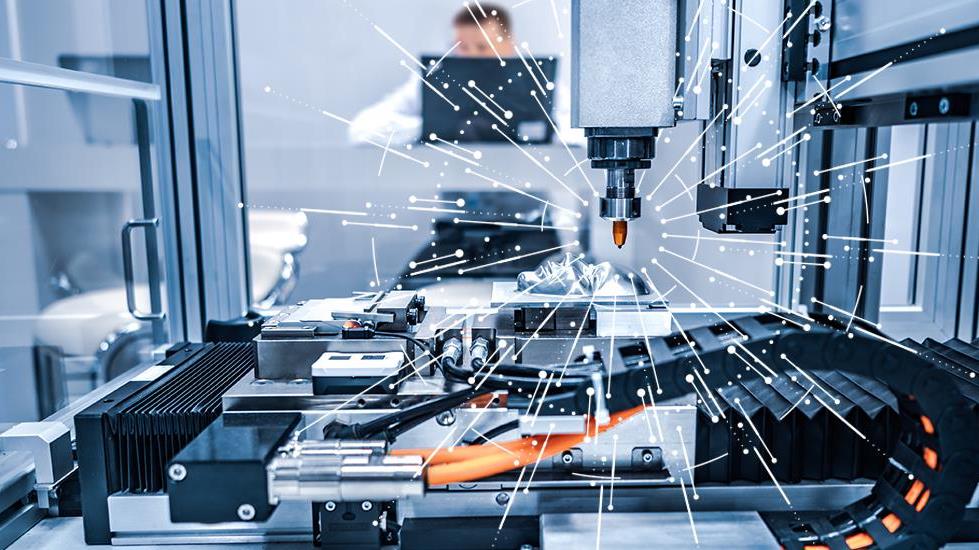
These are unparalleled times, and so with Manufacturing Day today, we’ll be marking the occasion differently this year. For the last few years on this first Friday of October, Flex has opened the doors of our various production facilities throughout the U.S. to local secondary school students with an eye to sparking young people’s interest in a career in manufacturing.
Since we’re unable to welcome students in person this year due to COVID-19, I would like to use this moment to share why I believe the future for manufacturing looks brighter than ever.

An infatuation with the shop floor
There is just something magical about seeing things made. From the very beginning, I not only felt at home on the shop floor — I was mesmerized by it. From readying the assembly of complex parts to seeing the finished goods roll off the production line and waving them off to their next destination, the shop floor is where it all comes together.
Fast forward to today, the factory floor is as dynamic as ever, but it’s also getting smarter as digitization and automation are transforming manufacturing. The factory of the future we’ve envisioned for decades has arrived, and it’s happening at the intersection of game-changing technologies. At just about every point along the value chain, we’re applying innovative technologies as we look to ensure safety, reap efficiencies, improve quality, lower risks, reduce costs, and apply sustainable practices.
With cloud and edge computing, connected, intelligent devices are all over the factory floor, constantly collecting data that can be used to train machine learning models to monitor operations in real time and flag issues. In our experience, predictive maintenance can reduce downtime as much as 20%, a huge win considering bottlenecks on the production floor can make or break on-time shipment.
We’re adopting digital twin — advanced simulation capabilities by using 3D modeling as well as virtual and augmented reality to build real-time, digital models of processes and physical entities. While digital twin’s applications are only limited by our imagination, a compelling use case is to build a digital representation of a proposed production line to experiment with different processes and configurations to make sure it works as planned before deploying.
Robots of course are also in the mix, having done much of the heavy lifting for many years now. As manufacturing becomes more complex, the next frontier is Industrial Internet of Things (IIoT) to endow robots with more nuanced control and coordination.
As it’s not just the production floor that is undergoing a revolution, our entire ecosystem — from supply chains to logistics — can also sense risks and trigger workflows to correct issues before they become critical problems.
At the nexus of innovation
This is all beyond exciting for someone who grew up on shop floors that weren’t quite as smart. Far from merely producing products to spec, we makers are working on the cutting edge of innovations in both hardware and software.
We have the privilege of partnering with brand leaders. We help them bring innovative products to market, functioning as their co-captains in designing and developing prototypes that preview the newest form factors and capabilities. We then play an equally important role in producing these next-gen products at scale. We deliver a broad portfolio of products, spanning many industries, from fitness wearables to network security appliances providing incredible opportunities to build cross-functional expertise and solve a wide range of complex challenges.
We build novel, emerging products that most people have yet to experience. For instance, with one of our automation specialist customers, we recently built robotic baristas that serve coffee in malls and subways. Customers order their coffee using an app, and the robotic arm retrieves the right cup size, creates the brew, then prints the customer’s name on the cup before presenting the beverage.
We are also building emerging technologies directly into the products we make. For instance, IoT is helping us realize on the vision of personalized and preventative healthcare. Connected sensors are embedded in patients’ medical devices to send vital data to monitoring devices in their doctors’ office. Patients can be notified immediately when issues are detected. Add in 5G, and healthcare professionals can quickly and reliably move huge medical imagery files to diagnose and treat patients.
When you think about how we orchestrate this enormous ecosystem — an automobile has 30,000+ parts just to put it in perspective — think about the skills and know-how that are part of the making. Apart from those heroes on the front lines of production, the industry also employs its share of inventors and visionaries to pull off the “miracle of things.”
Made to last
At the most fundamental level, things are still what really matters; without assembly lines, supply chains, and logistics, we wouldn’t have the basics of electricity, medicine, shelter, food, and transport.
During the height of the COVID-19 pandemic, among the collective response by our community of makers was to produce more masks, hospital beds, and ventilators. Even the things we consider essential to modern life — like WiFi and coffee — are only possible because people made router components and machinery for cultivating coffee plants. Manufacturing’s economic reach is also pronounced: for every $1.00 spent in manufacturing, another $2.74 is added to the economy. According to The National Association of Manufacturers, that is the highest multiplier effect of any sector.
Looking forward, manufacturing offers a remarkable window into the future. Let’s remember, however, for all the talk about technologies and tools driving the industry’s renaissance, we need to ignite interest among the next generation of skilled workers and leaders who can take the baton and open a new chapter. There are so many exciting career paths in manufacturing, from hardware and software design, planning and material management, robotics and automation, to quality and safety engineering. A growing commitment to sustainable manufacturing is poised to drive demand for engineers and scientists to help develop zero-waste, circular manufacturing, and carbon-negative solutions.
Throughout my career, I have been fortunate to have many mentors who challenged me to discover and explore new possibilities. I call on all leaders in our industry to find opportunities to help our young people navigate their career choices in our exciting and rewarding field. I call on all young people to consider joining our journey in opening the next frontier of manufacturing and discovering the magic of making extraordinary things.




